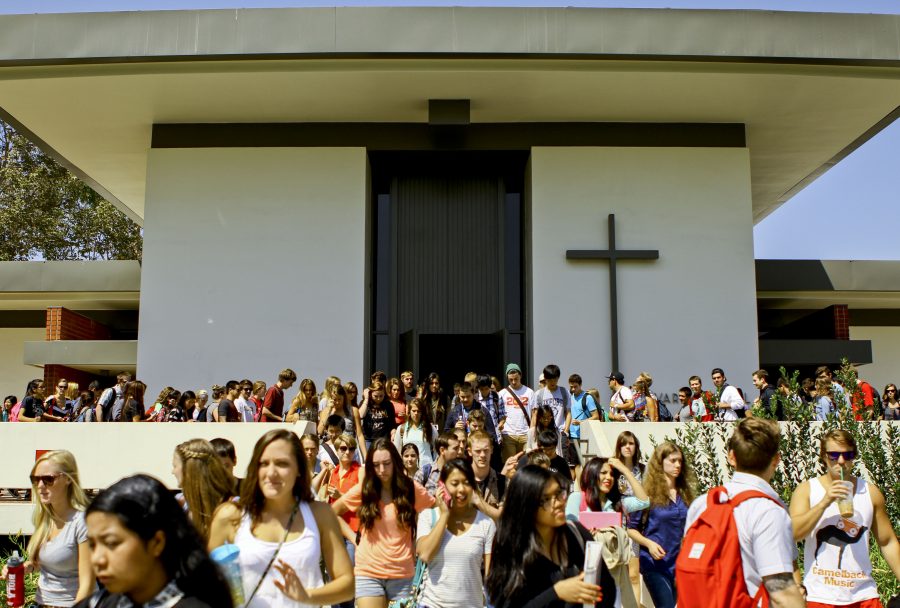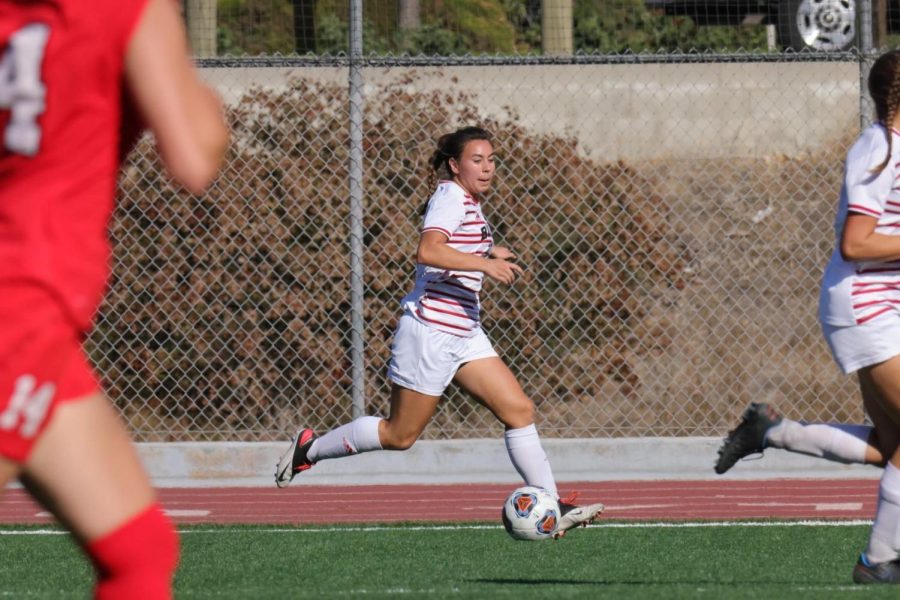This week at the Biola Art Gallery, senior art students Lydia Parsons and Lauren Guilford will be sharing their senior thesis shows. Both women are dealing with the topic of identity in various forms. Gallery openings will continue to take place every Monday at 6 p.m. through the end of the semester.
Parsons, 22, is a sculpture emphasis who is sharing her series of mold-making work in her show called “Inosculation of Self.”
Q: What is the title of your show? Where did the name come from?
A: ‘Inosculation of Self;’ inosculation is the term used when trees grow into each other, like melding, and it’s also a term for permanently binding things together. And then ‘of self’ refers to the human side of it, the bending of wills towards yourself and others.
Q: What medium did you work in? Give us a brief description of your show.
A: The medium in which I work would technically be mold-making and castings. A brief description of my show would be the fusion of bottle castings to antler castings displayed on wall.
Q: Where did you draw your greatest inspiration?
A: I started working with antlers three years ago and I just kind of went from there. I guess the inspiration just came from the form itself, so my dad gave me the antlers because he hunts. He gave me them and I started using them and then I decided to just keep running with it because the forms are so beautiful and I can do so much more with them than just display them as you normally would. And the bottles just came out of random. It was just a vessel. I liked the shapes of the bottles. The bottles I use are specific shapes. And so I just started putting them together and realizing that it’s a really interesting conversation.
Q: What has the process been like for you?
A: It has been a very interesting process seeing as I didn’t know the reason I wanted to do half of what I was doing and so I started really looking into it about a year ago and then looking at the forms and looking at myself and finding odd connections. Having that build and being very conscious of the work in relation to my actual personal life has really been interesting actually because I’m learning more about myself through my work than I ever have.
Q: What was most challenging?
A: Coming to the studio to actually do it. I don’t want to be here half the time! But then once I come in it’s O.K. and especially if there’s people in here it can be pretty darn fun. But actually getting up and driving over here.
Q: What are you looking forward to after graduation?
A: I am going back to live with my parents and I have a job lined up. I am working at a coffee shop for the fourth time.
Q: What is your greatest ‘take away’ as a Biola art major?
A: I feel that getting to know the art teachers personally and their desire to get to know you personally has been amazing. The support that I’ve gotten from them, getting to know their families, having them involved in my life is just kind of amazing. To have someone who you’re technically paying and who’s telling you to do stuff, like you and want the best for you, that’s kind of amazing that strangers would do that and that they willingly do it, so the care that teachers can have and the care that other students can have as well, it’s been really nice and surprising.
Guilford, 22, is a photography emphasis who titled her show “Collective Identity.” Her title refers to her identity as one made up of many parts, including the memories of her father which she collected through interviews and portrait sessions of those who were close to him while he was alive.
Q: What medium did you work in? Give us a brief description of your show.
A: My show’s all photography. My show is personal. … it’s pretty much going to the root of what most of my artwork revolves around which tends to be identity, like within family and relationships and things like that, kind of a breakdown of it. I met with people who knew my father enough and were important to him and called them interviews, for lack of a better term, but it was more just hanging out, like storytime kind of. They would bring things if they wanted to share things. … Through photography and these interview processes I aimed to piece together my father’s identity, which then further creates my own identity. My dad died when I was 2. It’s kind of dealing with ideas of how do you get to know someone, who, even though you don’t know them, kind of creates who you entirely are.
Q: Where did you draw your greatest inspiration?
A: Well, my show kind of came out of nowhere: I had had an entirely different idea. It came to me on a Thursday while I was in Philosophy and Aesthetics, which I hate saying, “It just came to me,” because it sounds corny but it really did. I was sitting there in class and I remember something popped in my head so I grabbed a different notebook and was writing down notes. … So it kind of came on its own. Once that happened Barry [Krammes] suggested I watch this documentary called ‘My Architect,’ which is about architect Louis Kahn. His son pretty much went on this exploration to find who is father was. When I watched it I was like, ‘Oh my goodness, he is basically doing what I am doing.’ I don’t know that I necessarily drew inspiration from it, but it made me feel like that’s for sure what I want to do.
Q: What was most challenging?
A: At first the 8×10 camera, and not because of technicalities, because I know how to use it, but even after the first interview, getting the scans back and comparing them with the medium format, the emotion was just so different. That was difficult. Other than that, emotionally … this has been so hard. I knew that going in, I knew that that would be hard. And hard in a good way, like I haven’t regretted any of it. … And also trying to walk the line of doing a whole series that is entirely personal without it being too personal, because I don’t want one person to walk into my show and feel sorry for me, my focus is not on that all. So I would assume nobody would feel that way. … That’s the tough thing about art because personal art can easily become too personal.
Q: What are you looking forward to after graduation?
A: Sleep! Yeah, I don’t know. It’s so bittersweet because the semester that you’re graduating you’re just so focused on being done. I was definitely overwhelmed this semester, and only by the grace of God have I made it through. I’m really just looking forward to being able to breathe. I don’t know what my plans are per se. I’m not quite sure where God wants me. It’s hard to even grasp that, ‘Oh I need to start thinking about that stuff!’ Maybe once the show’s done and once I graduate, give me like a month, and I’ll start thinking about that. We’ll see where I end up.
Q: What is your greatest ‘take away’ as a Biola art major?
A: Compared to other schools and state schools, things like that, being an art major at Biola has been such a blessing to be surrounded by people who are willing to give not just positive feedback but like, just like good criticism, not just slaughtering your work. That’s been really helpful in shaping, I think, not only art majors at Biola as artists, but also guiding them … because to me that’s a way that art majors can show the grace of God, also, and I think that it kind of has developed that within all of us to try to be able to be that type of person to give good criticism. I think a main take away has been the sense of community, showing how positive and encouraging that can be. That’s one thing I’m going to miss for sure. Not just at Biola, but especially amongst the art majors.






